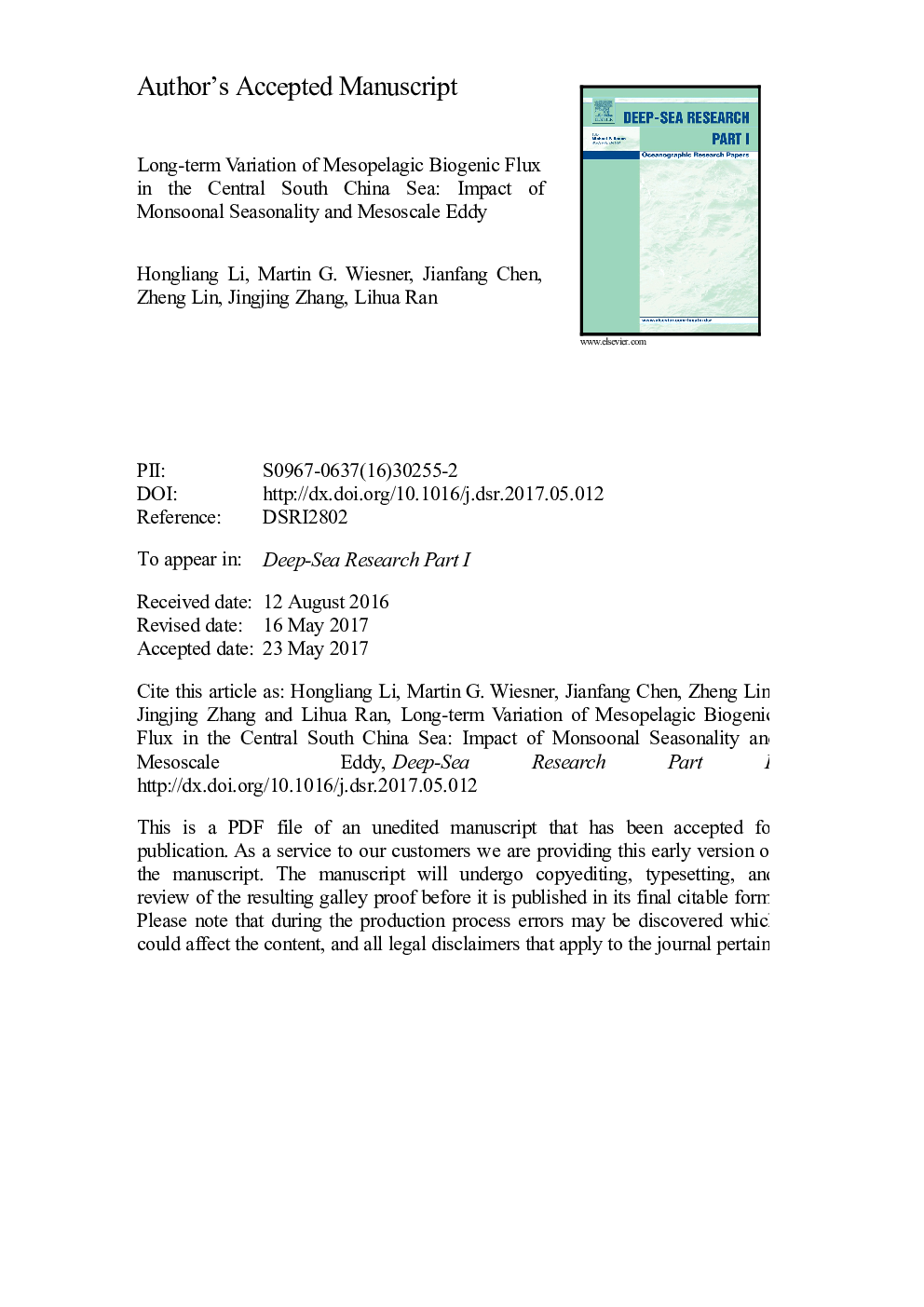| Article ID | Journal | Published Year | Pages | File Type |
|---|---|---|---|---|
| 5764650 | Deep Sea Research Part I: Oceanographic Research Papers | 2017 | 39 Pages |
Abstract
The East Asian Monsoon and mesoscale eddies are known to regulate primary production in South China Sea (SCS), the largest tropical marginal sea; however, their contributions to the deep biogenic flux are yet to be quantified. Based on 7-year time series sediment trap observations at the depth of 1200 m in the central SCS, we used the monthly average sinking biogenic fluxes to evaluate the impact of the monsoon and mesoscale cyclonic eddies on biogenic fluxes in combination with remote sensing physical parameters. The monthly average particulate organic carbon (POC) and opal fluxes, ranging from 3.0 to 5.2 and 14.8-34.9 mg mâ2 dâ1, respectively, were higher during the northeastern monsoon period. This corresponded to the deeper mixed layer depth and higher net primary production in this area, due to nutrient replenishment from the subsurface induced by monsoon transition and surface cooling. In contrast, lower POC and opal fluxes occurred during well-stratified inter-monsoon periods. In addition, CaCO3 flux (23.6-37.0 mg mâ2 dâ1) exhibited less seasonality and was assumed to originate from foraminifera. In terms of the long-term record, the combined effect of cyclonic eddies and mixing in the upper ocean could effectively regulate the temporal variation in the biogenic flux. In particular, the opal and POC fluxes in cyclonic eddies were 116% and 41% higher on average, respectively, than those during the non-cyclonic eddy period. Since the cyclonic eddies mainly occurred during the northeastern monsoon period, their contributions to biogenic flux via diatom blooms might overlap the regular winter flux peak, which could make the biological carbon pump more efficient at CO2 sequestration during this period thus amplifying the impact of seasonal transition.
Related Topics
Physical Sciences and Engineering
Earth and Planetary Sciences
Geology
Authors
Hongliang Li, Martin G. Wiesner, Jianfang Chen, Zheng Ling, Jingjing Zhang, Lihua Ran,
